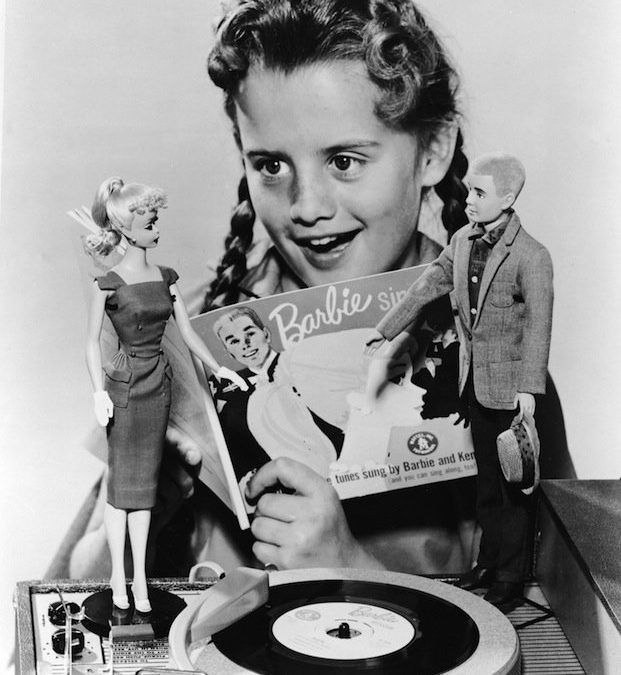Barbie Turns 60 Years Old
Barbie Turns 60 Years Old
My parents, Carl and Kathryn Williams, were married in 1951. In 1966, when they celebrated their 15-year wedding anniversary, they already had 11 of the 17 children that they would eventually bring into this world. The 11 children were made up of six boys and five girls. At that time, the Barbie doll, which had been officially unveiled at the New York toy fair in March 1959, had been around for seven years.
After the Barbie doll became popular, my mom instituted a new rule for our household. Her rule was that no Barbie dolls were allowed in the house. The primary reason for her rule was because she felt that the image that was portrayed by the Barbie doll had the potential of being unhealthy, damaging, and harmful to young girls.
The implied message that was being portrayed by the Barbie doll was that a girl could grow up to do and become anything she wanted to be as long as she had long, slender legs, an extremely thin waist, a well-developed chest, and a beautiful, blemish-free face.
My mom was concerned that girls who routinely played with Barbie dolls were being set up for failure and disappointment because as their bodies developed, they would eventually realize that they were never going to be able to acquire and maintain the slim body and beautiful features of a Barbie doll.
Some of my sisters were not happy about my mom’s rule because all their cousins had Barbie dolls. Despite the rule, my sisters were never really deprived of the joy of playing with Barbie dolls because all their female cousins who lived in the same neighborhood that we lived in had Barbie dolls. My sisters had the opportunity to routinely play with their cousins’ Barbie dolls when they were at their houses.
While my mom’s beliefs about the Barbie doll were considered by some to be extreme, years later, her concerns were confirmed. One Developmental Psychology study reported that “girls aged five to six were more dissatisfied with their shape and wanted more extreme thinness after seeing Barbie doll images than after seeing other pictures.” For girls who were in the six to seven age range, “the negative effects were even stronger.”
Georgette and I were married in June 1980, and we had our first child — a boy — in March 1981. The six children that followed our son were all girls. When our daughters started receiving Barbie dolls as gifts, I told Georgette about my mom’s rule.
While we did not adopt my mom’s rule for our household, I did make it clear to my daughters that I never wanted to find their Barbie dolls — or later, their Ken doll — lying around the house without any clothes on their bodies. Georgette and I had strict rules concerning modesty and I felt that we needed to emphasize the concept of modesty by requiring clothing on their dolls.
One day, shortly after my daughters began playing with Barbie dolls, I walked into their bedroom and noticed that they had left one of their Barbie dolls on the floor without any clothes on. I picked up the doll and walked into the kitchen and grabbed a roll of masking tape.
I then proceeded to tightly wrap the tape around the doll, from the knees all the way up to the shoulders. I wrapped several layers of tape around the body of the doll, so the girls would have trouble removing it. I then told them that if I found any of their other dolls without clothing, I would “dress” the dolls in my own way — with tape. The next time that I found one of their naked dolls on the floor, I wrapped it with several layers of gray duct tape.
On both occasions, my daughters were irritated with me because of the time that it took for them to remove the tape from their dolls. After I dressed the second doll with tape, they made sure that their dolls were always properly dressed.
I thought about my mom’s “no Barbie rule” and my “dress code rule” recently when I heard that Barbie had turned 60 years old in March of this year. Her birthday fell on a Saturday (March 9, 2019) and was celebrated at various weekend events throughout the United States and the rest of the world. An article that was published at Newsweek.com provided the following interesting facts about Barbie:
● Barbie’s real and full name is Barbara Millicent Roberts, and she was named after her creator, Ruth Handler’s, daughter.
● The first Barbie doll cost only $3.
● On average, 58 million Barbie dolls are sold annually in 150 countries around the world.
● The first black Barbie doll was added to the family of Barbies in 1968.
● Barbie’s boyfriend Ken didn’t come into the picture until 1961. He was named after the creator’s son.
When I read about the birthday celebrations and the hundreds of millions of Barbie dolls that have been sold since her creation in 1959, I couldn’t help but think about what God really intended for our children’s imaginations. Did He intend for their attention to be captured and held by make-believe characters, such as Santa Claus, the Easter Bunny, Mickey Mouse, Iron Man, and Barbie?
Or was it His intention that the imaginations of our children be occupied by real-life characters, such as the prophets and the saints, each of whom had dynamic qualities and traits that other people could learn from and emulate.
What if instead of 58 million Barbie dolls being sold annually around the world, there were 58 million Blessed Virgin Mary, St. Joseph, and Jesus dolls that were being sold to parents to be given to their children to play with. Of course, there could also be accessories for those dolls, such as clothing, tools, vehicles, and houses. And instead of cartoons and movies that feature fictional characters, there could be cartoons and movies that showed the adventures and lessons learned from various Old Testament and New Testament characters.
It’s a shame that our children’s imaginations are wasted on images and characters that don’t expand their curiosity and knowledge about their Creator.






1 Comment
[…] I published last week’s article about the 60th anniversary of the Barbie doll, my mom called me on my cell phone. I wasn’t […]